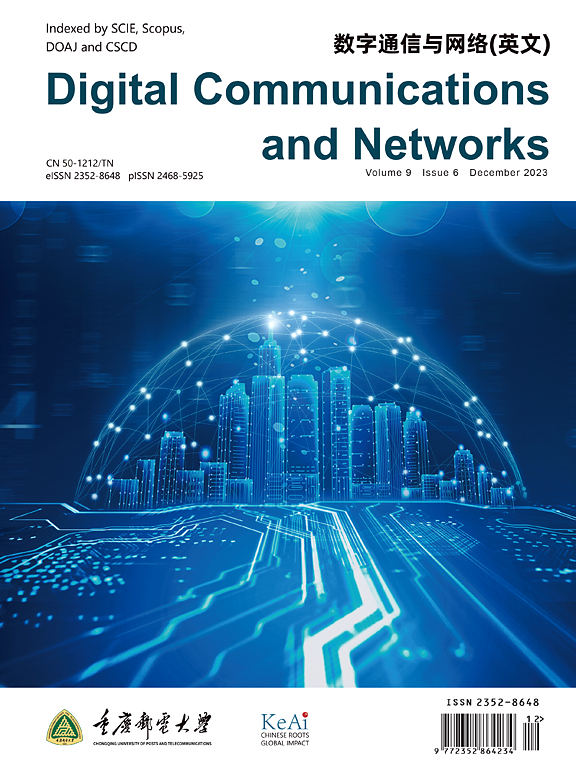带解码器侧信息的学习型分布式图像压缩
IF 7.5
2区 计算机科学
Q1 TELECOMMUNICATIONS
引用次数: 0
摘要
随着数字通信的快速发展和物联网的广泛应用,多视图图像压缩作为图像数据通信的基础技术越来越受到人们的关注。多视图图像压缩旨在通过利用图像之间的相关性来提高压缩效率。然而,编码器端对同步和图像间通信的要求带来了巨大的挑战,特别是对于受限的设备。在这项研究中,我们引入了一种新的基于注意力机制的分布式图像压缩模型,以解决解码过程中侧信息可用性的挑战。我们的模型集成了一个编码器网络、一个量化模块和一个解码器网络,以确保高压缩性能和高质量的图像重建。编码器使用深度卷积神经网络(CNN)从输入图像中提取高级特征,然后通过量化模块进行进一步压缩,然后进行无损熵编码。我们模型的解码器由三个主要组件组成,它们允许我们在解码器端充分利用图像内部和图像之间的信息。具体来说,我们首先引入通道空间注意模块来捕获和细化单个图像特征映射中的信息。其次,我们采用半耦合卷积模块提取图像中的共享信息和特定信息。最后,采用交叉注意模块对从侧信息中提取的互信息进行融合。我们的模型的有效性在各种数据集上得到了验证,包括KITTI Stereo和cityscape。结果突出了我们的方法优越的压缩能力,超越了最先进的技术。本文章由计算机程序翻译,如有差异,请以英文原文为准。
Learned distributed image compression with decoder side information
With the rapid development of digital communication and the widespread use of the Internet of Things, multi-view image compression has attracted increasing attention as a fundamental technology for image data communication. Multi-view image compression aims to improve compression efficiency by leveraging correlations between images. However, the requirement of synchronization and inter-image communication at the encoder side poses significant challenges, especially for constrained devices. In this study, we introduce a novel distributed image compression model based on the attention mechanism to address the challenges associated with the availability of side information only during decoding. Our model integrates an encoder network, a quantization module, and a decoder network, to ensure both high compression performance and high-quality image reconstruction. The encoder uses a deep Convolutional Neural Network (CNN) to extract high-level features from the input image, which then pass through the quantization module for further compression before undergoing lossless entropy coding. The decoder of our model consists of three main components that allow us to fully exploit the information within and between images on the decoder side. Specifically, we first introduce a channel-spatial attention module to capture and refine information within individual image feature maps. Second, we employ a semi-coupled convolution module to extract both shared and specific information in images. Finally, a cross-attention module is employed to fuse mutual information extracted from side information. The effectiveness of our model is validated on various datasets, including KITTI Stereo and Cityscapes. The results highlight the superior compression capabilities of our method, surpassing state-of-the-art techniques.
求助全文
通过发布文献求助,成功后即可免费获取论文全文。
去求助
来源期刊

Digital Communications and Networks
Computer Science-Hardware and Architecture
CiteScore
12.80
自引率
5.10%
发文量
915
审稿时长
30 weeks
期刊介绍:
Digital Communications and Networks is a prestigious journal that emphasizes on communication systems and networks. We publish only top-notch original articles and authoritative reviews, which undergo rigorous peer-review. We are proud to announce that all our articles are fully Open Access and can be accessed on ScienceDirect. Our journal is recognized and indexed by eminent databases such as the Science Citation Index Expanded (SCIE) and Scopus.
In addition to regular articles, we may also consider exceptional conference papers that have been significantly expanded. Furthermore, we periodically release special issues that focus on specific aspects of the field.
In conclusion, Digital Communications and Networks is a leading journal that guarantees exceptional quality and accessibility for researchers and scholars in the field of communication systems and networks.
 求助内容:
求助内容: 应助结果提醒方式:
应助结果提醒方式:


